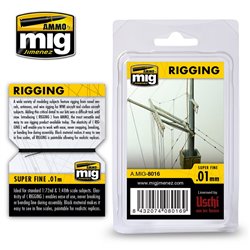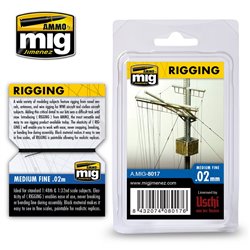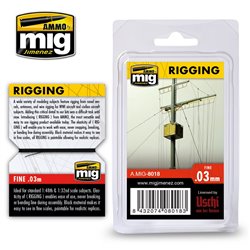For many in the hobby, a model railway is more than just a collection of trains, track and scenery. It's a living,...
No products
Product successfully added to your shopping cart
There are 0 items in your cart. There is 1 item in your cart.
Search Tips
What size thread should I use for the rigging on a 1:350 scale model ship ?
When it comes to rigging a 1:350 scale model ship, it is important to choose the right size thread to ensure accuracy and realism. The thread selected should be proportional to the size of the ship and its rigging in order to maintain the proper scale and realism.
For a 1:350 scale model ship, the most commonly used thread size for rigging is 0.004" (0.1mm) or 0.006" (0.15mm) in diameter. This size is ideal for creating realistic rigging that is not too thick or too thin. It is important to note that different manufacturers may have slightly different thread sizes, so it's always a good idea to check first. Additionally, the kit manufacturer may offer some recommendations for guidance. If in doubt, test the thread for size in a test rig before committing any particular material to the model in question.
There may be other options that can be used to create a realistic solution, these include other materials such as fine fishing line or even stretched sprue. These materials can be easily painted to match the desired colour and can provide a good alternative for rigging purposes. Nylon is another material that may offer a realistic scale appearance, although it can be difficult to work with.
When rigging a model ship, it may be useful to adopt a trial-and-error approach and be patient. Rigging can be a delicate and intricate process, ideally a modeller will use fine tweezers or pliers for working the thread. This can then be secured in place with a small drop of glue. The use of weights or pegs at this stage can be useful as it helps to maintain the tension of the rigging whilst the glue is curing, thus ensuring that the rigging is suitably taut and adds to the overall realism of the model.
Click here to receive the tips weekly in your mailbox. You can unsubscribe at any time.










